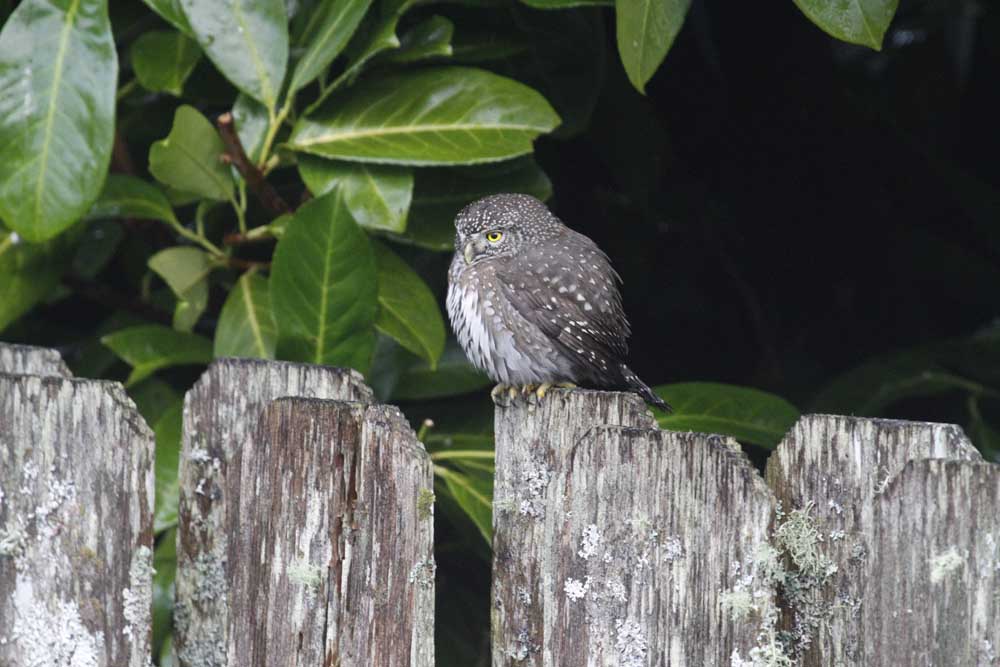Birding: Hoot, hoot, hooray for this pretty owl!
Published 10:02 am Wednesday, November 27, 2024

- Like all owls, the northern pygmy owl has sharp talons with which to snag its prey. It uses its sharp talons to snatch and grab and then pin its prey to the ground.
A few weeks ago, the West Coast experienced tornado warnings, lighting strikes, a bomb cyclone, king tides, and several wind-storms with accompanying power outages. Most birds and people hunkered down for much of the time. Birders not so much. Many came from a far to see a surprise owl that was hanging out on the rocks of the jetty, namely, a burrowing owl. I dub it as a surprise because to my knowledge it is the first ever sighting for the Long Beach Peninsula and, furthermore, the Pacific County checklist of birds indicates there are fewer than five records in Pacific County as of 2023.
Photos of the bird were submitted by most birders that were lucky enough to see the owl to eBird. Every photo showed the burrowing owl’s unmistakeable pose, standing upright on very long legs. To me, it is skinny looking! Burrowing owls are skittish, especially when approached too closely. They will likely bob up and down and then dive into its hole. Birders described the owl seeking refuge in the holes between and around the huge jetty rocks.
The burrowing owl is the size of a robin. It has a short tail and extremely long, light, feathered legs. Its face is framed in white, and it wears a brownish-black collar. Its eyes are yellow. The bird’s upper areas are brown with white spots. Brown spots are visible on the breast and belly.
Unlike other North American owls, it nests underground in the abandoned burrows of mammals such as prairie dogs, badgers, and ground squirrels. These terrestrial owls as associated with open areas such as grasslands, fields, deserts, and farmland. In other words, their habitats are treeless expanses where they can forage for insects, small mammals, birds and amphibians. Insects are their main and preferred food. Science tells us that the burrowing owls hop, fly, run, walk and or hover from a perch when foraging. They are known to be active both during the day and night.
As expected, the burrowing owl is on the decline due to the loss of habitat. The loss of habitat also means a loss of food source. Grasslands and farmland, for example, are home to large numbers of insects. Their disappearance means a disappearance of its main food. In addition, humans also play a part in their decline. Dogs, cats, and pesticide use are some other hazards they face.
Another major sighting as a result of the stormy weather was that of a northern pygmy owl. It appeared in one of our reader’s backyard. It is an important observation for the Peninsula because it is the first sighting of this species, at least as far as I know. The local field checklist of birds doesn’t currently list it. It is designated as “Harder to find, usually seen annually” on the current Pacific County checklist of birds.
The northern pygmy owl is smaller than the robin sized burrowing owl. It is the size of a sparrow! It is characterized by a long finely brown and white barred tail that the bird often holds off to the side of its body. It has yellow eyes, a yellowish bill, and a spotted forehead. The head is dark with short white eyebrows. Its underparts are whitish with heavy streaks. The back of the neck has two false eyespots. It appears to have eyes in the back of its head! Scientists believe these false eyes may act as a deterrent to a potential threat of attack by an enemy while it is sleeping.
Its habitat is mainly coniferous forests in our area, but it is also found in mixed aspen and oak forests and dense canyon growth. The northern pygmy owl often actively forages during the day. Its main food source is small mammals, insects, reptiles, and birds. When prey is sighted it pounces on it and pins it to the ground.
My friend’s bird perched in his yard where there are numerous feeders and bird baths. Two Anna’s hummingbirds harassed the owl by flying at it and hovering in place. All of the usual birds, except for two dark-eyed juncos left the premises. The pygmy owl ignored the hummers , even though they would have been a tasty meal, so it seems as though the bird had just finished eating a tasty meal and was resting and digesting! Further evidence of this idea might be that my friend and birder was able to get quite close with camera in hand to take many, many close-up photos. The bird stayed on its backyard perch for a little over half an hour allowing my friend to approach it several times. It flew off on its own when it was ready and while my friend was enjoying what was to be the last look from his window!
Stormy weather and king tides can be exciting times! It is a condition under which birds that we may not have ever seen in our area or those we see just once in a while pop up in yards on beaches, wetlands, fields, etc. Keep your eyes open for these special sightings. They can be so very exciting! Happy birding!









